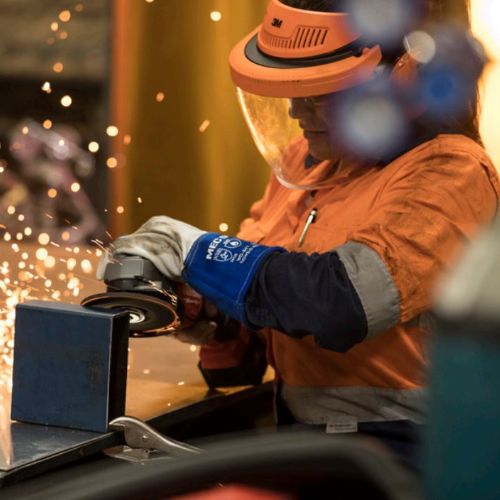Select Delivery Method
Please enter your delivery address to check availability.
Please select your click and collect pick up Branch to check availability.
Brushed vs Brushless Power Tools
Brushless tools have now become the first choice for professionals who demand high performance. With better efficiency, more power and longer run time, brushless power tools can provide a host of benefits over traditional brushed motors.
But are brushless tools the right solution for you?
How do brushed motors work?
Traditional brushed motors are made up of a rotor, commutator, brushes, axle, and outer permanent magnets.
While the magnets and brushes remain stationary, the rotor and commutator rotate together on the motor shaft within the magnets. When the motor is energised, a charge travels from the battery, through the brushes, and into the commutator. The commutator then passes the charge on to the rotor. The windings are magnetised by the charge and push against the stationary ring of magnets that surround it, forcing the rotor assembly to spin. The spin doesn't stop until the charge from the battery stops.
How do brushless motors work?
As the name would suggest, brushless motors do away with the brushes (as well as the commutator in the motor). Their job is taken by a circuit board which coordinates the electronic transfer of energy in the motor, making brushless much smarter tool than traditional brushed varieties With the signal communicating directly with the windings it is able to adjust to the task at hand instead of going at full-bore non-stop. The more resistance the tool sense the more power it draws, the less resistance lessens the pull, helping to conserve battery and improve runtime.
RELATED: 4 OF THE BEST ROTARY HAMMERS IN 2019
Which is best for me?
It is clear the technology used in brushless power tools provides superior performance over brushed tools. Brushed motors run at about 75 – 80% efficiency, meaning that only around three quarters of the total power power used by the motor is being turned into rotational force, with the rest being lost as heat. Brushless motors on the other hand are typically 85 - 90% efficient.
As the brushes and commutators on brushed tools are in constant contact with the shaft, they will wear out quicker under heavy use. Brushless motors won't encounter the friction or voltage drop of brushed motors, helping to increase the life of the motor and provide better overall performance. In addition, this improves battery life and runtime, and greatly reduces maintenance on the tool.
So, if you're a professional who's on the tools everyday, you're probably mostly using mostly brushless tools already, or if not already, seriously considering an upgrade. For the DIY warrior who pulls out a drill every now and then for the odd job, the extra money you will need to spend on a brushless tool could probably be spent better elsewhere. However, if you are looking to take your DIY game to the next level, brushless power tools could be well worth the investment for a longer lasting, more powerful and more reliable tool.















